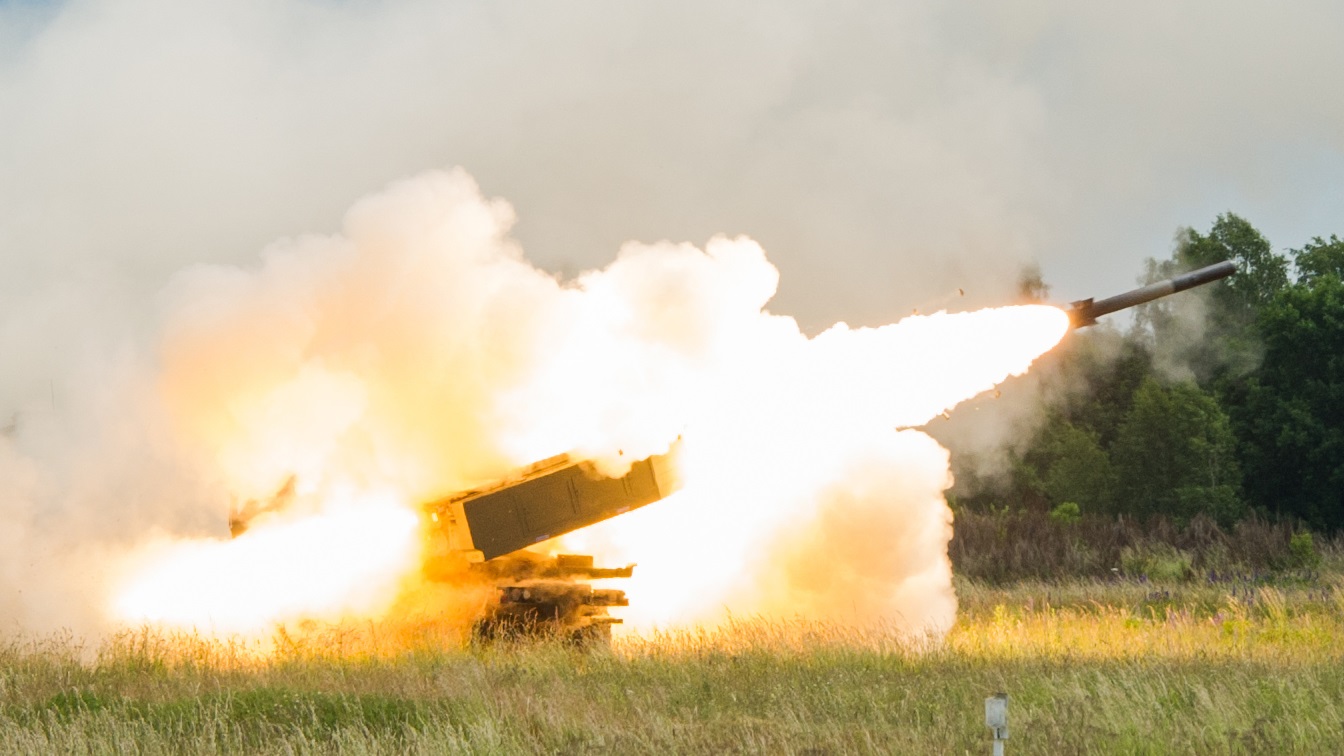Harrison Kass

What is HIMARS? An Expert Explains – The M142 High Mobility Artillery Rocket System (HIMARS) is just what the name suggests: a mobile rocket launcher. Relatively lightweight, the system is capable of launching multiple rockets from its mounting on the back of a standard U.S. Army M1140 truck frame. The system carries a pod that can be equipped with six 227mm GMLRS rockets, or alternatively, with one 610mm ATACMS missile.
The HIMARS is “protecting our soldiers with combat proven reliability,” Lockheed Martin, the systems designer, said on its website. “Adversaries around the globe are becoming more sophisticated. Our customers require the most advanced tactical missile capabilities to protect soldiers, citizens and infrastructure. The Lockheed Martin High Mobility Artillery Rocket System is a strategic capability, improving homeland and important asset defense while reducing overall mission costs.”
Multiple Rocket System on Wheels
The HIMARS is essentially a M270 Multiple Launch Rocket System (MLRS) on wheels.
The system enhances the crew’s ability to survive in a combat zone by employing a shoot-and-scoot capability. “HIMARS can emplace, fire, relocate and conduct reload in a matter of minutes,” Lockheed Martin said, “dramatically reducing an adversary’s ability to locate and target HIMARS.”
The HIMARS pod is actually identical to the MLRS pod. Developed in the 1990s, the HIMARS first saw action in the Middle East, where the U.S. was embroiled in two decades of conflict. The HIMARS made headlines in 2010 when an HIMARS launched rocket killed 12 civilians in Afghanistan during Operation Moshtarak. Use of the HIMARS was suspended while an investigation was conducted.
Initially, there were concerns that the rocket system had fallen short, hitting the wrong target. But a British officer argued that the rockets were on target, that the civilian deaths were attributable to the Taliban, who used civilians as human shields. Lockheed, of course, maintains that the system is highly accurate. “With a recognized and proven range up to 300km and a variety of future munitions in development that will offer extended range beyond 499 km, HIMARS delivers affordable, quick, long-range precision strikes.”
Highly Transportable
The HIMARS is highly transportable and deployable just about anywhere. The entire system, truck and all, can conveniently be loaded into the back of a C-130 Hercules at which point the system can then be flown in, even to remote airfields. The HIMARS saw heavy action in Iraq against ISIS; in 2015, the U.S. Army reported firing over 400 HIMARS rockets at it.
By 2016, Lockheed was boasting that the system had crossed the 1 million operational hours threshold and had achieved a commendable 99 percent operational readiness rate. Since 2016, the operational hours have more than doubled. “The HIMARS solution is a highly reliable, combat proven, fielded system that has exceeded all performance requirements. More than 540 fielded systems worldwide have accumulated over 2,000,000 operating hours,” Lockheed Martin said.
Currently, the weapons platform is seeing action in Ukraine; initially, the U.S. supplied Ukraine with four HIMARS systems. But as the system has proven successful against Russian invaders, the U.S. has continued supplying Ukraine with more HIMARS systems. Allegedly, eight Ukrainian HIMARS systems have destroyed 30 Russian command stations, plus ammunition storage facilities – although this is highly disputed. Today, Ukraine is operating as many as 16 HIMARS systems.
The system is one of the foreign-supplied weapons systems that is helping Ukraine thwart a much larger Russian force.
The Ukrainians have even created decoy HIMARS out of wood, to draw Russian fire.
No comments:
Post a Comment